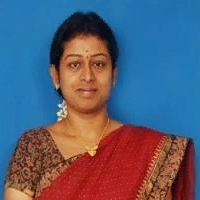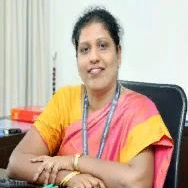International Journal of Image, Graphics and Signal Processing (IJIGSP)
IJIGSP Vol. 9, No. 4, 8 Apr. 2017
Cover page and Table of Contents: PDF (size: 994KB)
Classification of Mammogram Abnormalities Using Pseudo Zernike Moments and SVM
Full Text (PDF, 994KB), PP.30-36
Views: 0 Downloads: 0
Author(s)
Index Terms
Breast cancer, CAD, pseudo Zernike moments, SVM
Abstract
The most common malignancy observed among Indian women is the breast cancer. However, the cancer is detectable earlier by means of mammograms. Computer Aided Diagnostic (CAD) techniques are the boon to medical industry and these techniques intend to support the physicians in diagnosis. In this paper, a novel CAD system for the detection and classification of the abnormalities in the mammogram is presented. The proposed work is organized into four important phases and they are pre-processing, segmentation, feature extraction and classification. The pre-processing phase intends to remove unwanted noise and make the mammograms suitable for the next process. The segmentation phase aims to extract the areas of interest to proceed with further process. Feature extraction is the most important phase, which is meant for extracting the texture features from the area of interest. This work employs pseudo zernike moments for extracting features, owing to the noise resistance power and description ability. Finally, Support Vector Machine (SVM) is employed as the classifier, so as to distinguish between the malignant and normal mammograms. The performance of the proposed work is evaluated by several experimentations and the results are satisfactory in terms of accuracy, specificity and sensitivity.
Cite This Paper
S. Venkatalakshmi, J. Janet,"Classification of Mammogram Abnormalities Using Pseudo Zernike Moments and SVM", International Journal of Image, Graphics and Signal Processing(IJIGSP), Vol.9, No.4, pp.30-36, 2017. DOI: 10.5815/ijigsp.2017.04.04
Reference
[1]W.H.Organization,World Health Organization Statistical Information System, URL: http://www.who.int/whosis/mort/en/index.html, 2006.
[2]R.G.Bird, T.W.Wallace, B.C.Yankaskas, “Analysis of cancers missed at screening mammography,” Radiology, vol. 184, pp. 613–617,1992
[3]H. Burhenne, L. Burhenne, F. Goldberg, T. Hislop, A.J.Worth, P.M.Rebbeck, and L.Kan, “Interval breast cancers in the screening mammography program of British Columbia: Analysis and classification,” Am. J Roentgenol., vol. 162, pp.1067–1071,1994
[4]Lee SK, Lo CS, Wang CM, Chung PC, Chang CI, Yang CW, Hsu PC: A computer-aided design mammography screening system for detection and classification of microcalcifications. Int J Med Inform 60(1):29–57, 2000
[5]R. Nithya, B.Santhi, Mammogram analysis based on pixel intensity mean features, J.Comput.Sci.8(3)(2012)329–332.
[6]R. Nithya, B.Santhi, Classification of normal and abnormal patterns in digital mammograms for diagnosis of breast cancer, Int.J.Comput.Appl.28(6)(2011) 21–25 (published by Foundation of Computer Science, NewYork, USA).
[7]J.S.L. Jasmine, S.Baskaran, A.Govardhan, Automated mass classification system in digital mammograms using contourlet transform and support vector machine, Int.J.Comput.Appl.31(9)(2011)54–61(published by Foundation of Computer Science,New York,USA).
[8]J. Suckling, J.Parker, D.Dance, S.Astley, I.Hutt, C.Boggis, etal., The mammographic images analysis society digital mammogram database, Exerpta Med.1069(1994)375–378.
[9]A.P.Nunes, A.C.Silva, A.C.D.Paiva, Detection of masses in mammographic images using geometry, Simpsons Diversity Index and SVM, Int.J.Signal Imaging Syst.Eng.3(1)(2010)43–51.
[10]D.Costa, L.Campos, A.Barros, Classification of breast tissue in mammograms using efficient coding, Bio Med.Eng.OnLine10(1)(2011)55.
[11]M.A.Berbar, Y.A.Reyad, M.Hussain, “Breast massclassification using statistical and local binary pattern features”, IEEE Computer Society, ISBN 978-1-4673-2260-7, pp.486–490, 2012.
[12]P.M.Sousa Carvalho, A.C.Paiva, A.C.Silva, “Classification of breast tissues in mammographic images in mass and non-mass using mcintosh diversity index and SVM”, in:P.Perner(Ed.), Machine Learning and Data Mining in Pattern Recognition, Lecture Notes in Computer Science, vol.7376, Springer, Berlin, Heidelberg, 2012, pp.482–494.
[13]M.Hussain, “False positive reduction using Gabor feature subset selection”,in: 2013International Conference on Information Science and Applications (ICISA), vol.10, 2013, pp.1–5.
[14]M.Nguyen, Q.Truong, D.Nguyen, T.Nguyen, V.Nguyen, “An alternative approach to reduce massive false positives in mammograms using block variance of local coefficients features and support vector machine”, Procedia Comput. Sci.20(0)(2013)399–405.
[15]F.Moayedi, Z.Azimifar, R.Boostani, S.Katebi, “Contourlet-based mammography mass classification using the {SVM} family”, Comput.Biol.Med.40(4) (2010)373–383.
[16]P.GöRgel,A.Sertbas,O.N.Ucan, “Mammographical mass detection and classification using local seed region growing-spherical wavelet transform (LSRG-SWT)hybrid scheme”, Comput.Biol.Med. 43(6)(2013)765–774.
[17]C.W. Chong, P. Raveendran and R. Mukundan, "The scale invariants of pseudo-Zernike moments", Pattern Anal Applic, vol.6, pp.176-184, 2003.
[18]Mukundan R and Ramakrishnan KR. "Moment functions in image analysis – theory and applications". World Scientific 1998.
[19]The new MIAS Database. Available: http://www.wiau.man.ac.uk/services/MIAS/MIASfaq.html.

